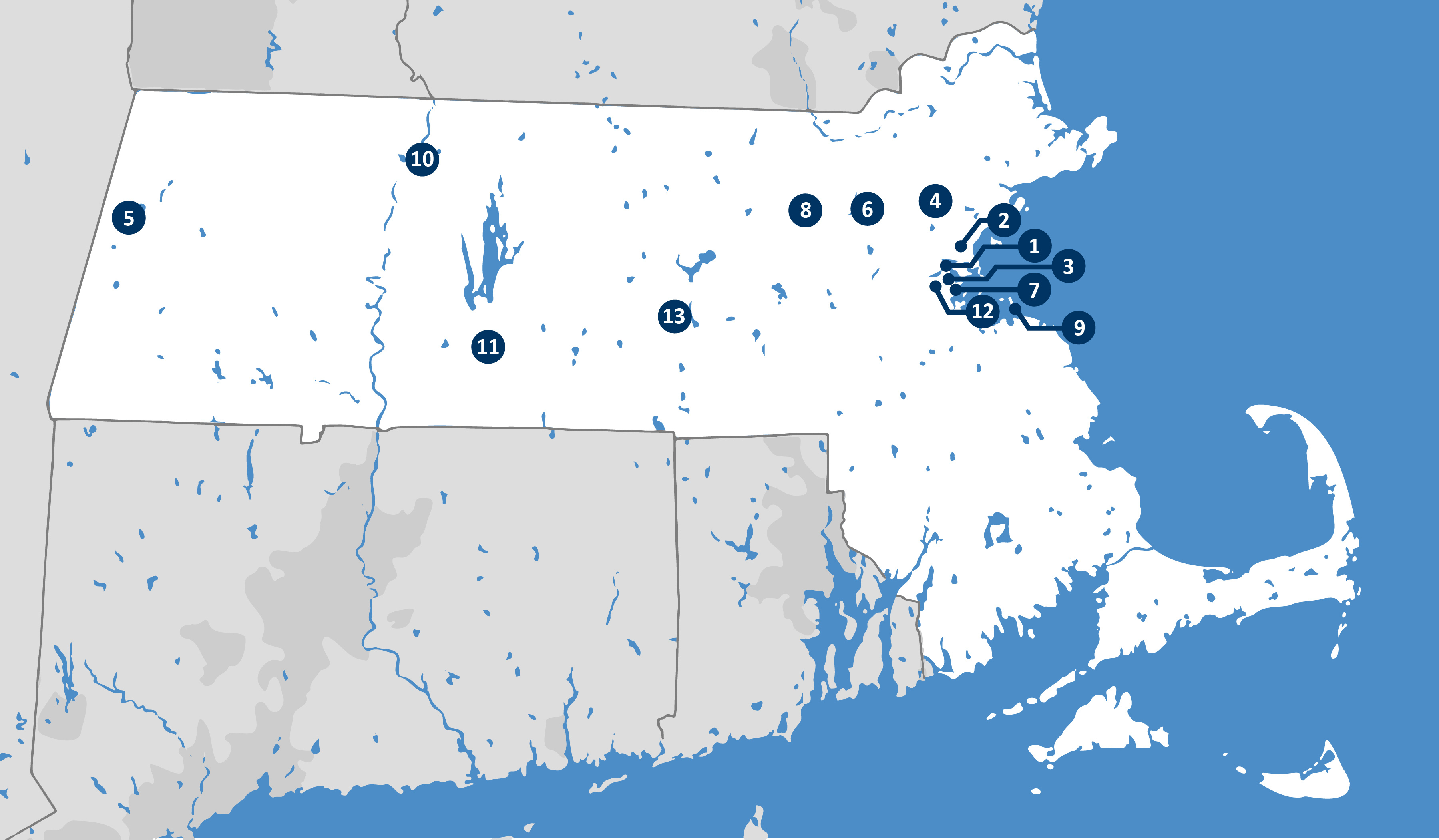
The Challenge: Catalyze the Development of Community Microgrids
Microgrids have the potential to provide cost-effective energy resilience for critical facilities, while also supporting the local distribution system, integrating renewable energy sources, and reducing greenhouse gas emissions. With few previously existing models in Massachusetts, however, municipalities needed help designing such solutions for their communities.
About Community Microgrids
The Community Microgrids program supported the design of community microgrids throughout Massachusetts to lower customer energy costs, reduce greenhouse gas (GHG) emissions, and provide increased energy resilience. The program awarded funding for feasibility assessments to advance proposed microgrid projects through the early project origination stages and attract third-party investment to these opportunities.
In February 2018, MassCEC awarded $1.05 million in funding, which resulted in 13 feasibility studies of projects in communities throughout the Commonwealth.
Program Accomplishments
-
Produced 13 feasibility studies on potential design and impact of community microgrids
-
Created some of the first significant work on grid resiliency in the Commonwealth
- Provided a blueprint for future resiliency work such as the Clean Energy and Resilience (CLEAR) program and further microgrid development in Massachusetts’ communities
2017 - 2020
Feasibility Studies
Pilot Projects
Lessons Learned
Economies of scale
Larger PV / battery installations are typically more cost effective than smaller ones.
Diversity of load
Diverse loads can improve system performance. Diversity dimensions include levels of criticality, seasonality, peak usage hours, and flexibility in peak usage.
Topology
Topology matters!
- "True" microgrids require buildings to be on a single, isolatable circuit.
- Distribution infrastructure is expensive (transformers, switches, new conductors) so distances from microgrid buildings can increase cost.
- Nearest neighbor isn’t necessarily a neighbor at all on the grid.
- Plan ahead, if possible, to make buildings "microgrid-ready."
Ownership models
Massachusetts utility franchise law allows utilities the right of first refusal with regard to ownership and operation of infrastructure within "public ways" (streets). Therefore, community microgrid projects in the Commonwealth must be collaborative between utility and customers.
Program Details
Project and Consultant Selection Process
MassCEC released a Request for Expressions of Interest (EOIs) from Massachusetts communities in May 2017. The EOI was circulated to key stakeholders such as public works departments, electric distribution companies, municipal light plants, emergency services departments, and others. MassCEC also released a Technical Consultant RFP in June 2017 to identify firms capable of conducting the feasibility studies on behalf of the communities. MassCEC ultimately funded thirteen feasibility studies. The projects kicked off in June 2018.
